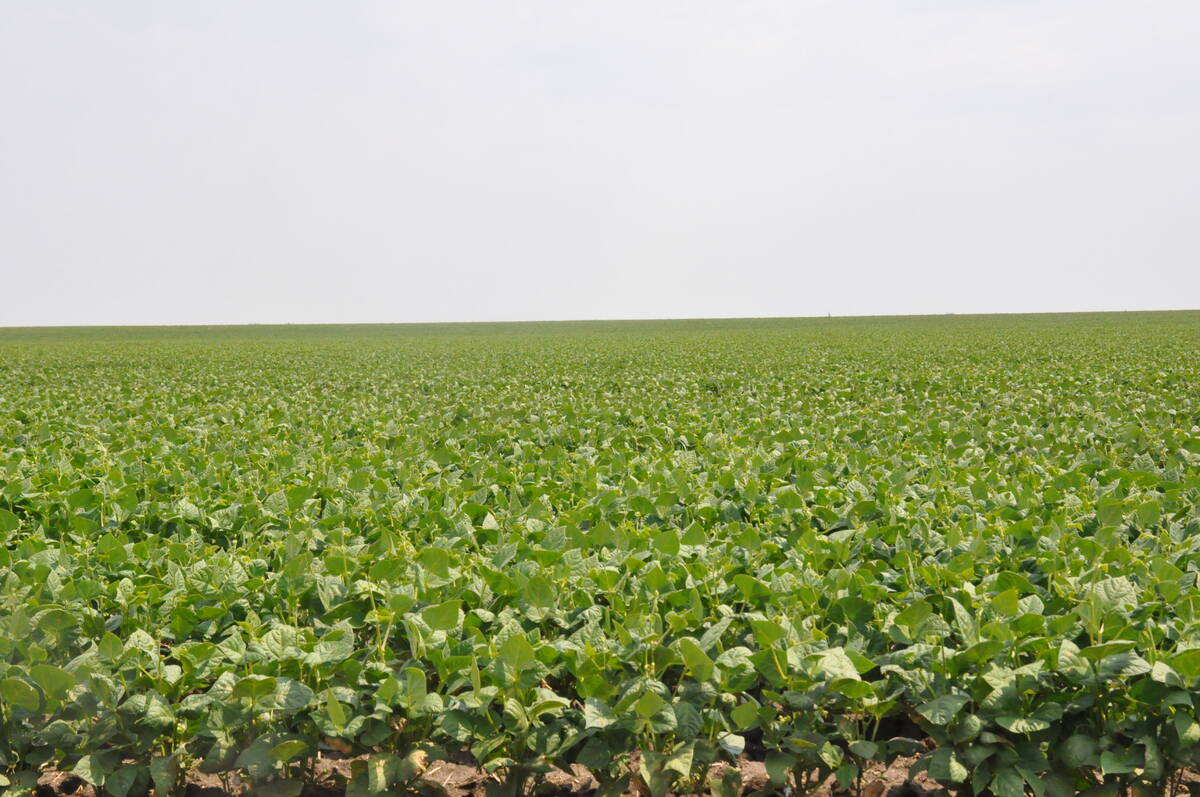HERSCHEL, Sask. – Baby Shayna plays with a visitor’s dusty shoe on the
wood laminate floor of a refurbished school house as her parents talk
about the life they are building here.
Shayna’s 24-year-old parents Jon and Jen Fehr explain how their
education has laid the foundation for a career in farming near
Herschel, Sask.
Both are graduates of Alberta’s Olds College – he in seed and grain
technology and she in agricultural production. Both grew up in the
Read Also

Coloured bean production down, whites are up
Bean prices have been slumping and the outlook is for more of the same.
district on mixed farms and dreamed of farming one day.
The Mennonite couple also spent a year studying at a bible college in
Regina.
The Fehrs are slowly building their farm, Fairhaven Acres. They own two
quarters and share farm machinery and labour with Jon’s father, David,
who farms and runs a cow-calf operation just a field away.
This year, the farm will plant durum and field peas, while also putting
lighter land back into grass.
“One lesson I have learned is it’s important to walk before you run,”
said Jon, whose successful experiment with 80 acres of chickpeas last
year has encouraged him to try something different.
“We try in a small way and if it works, we implement it into our
rotation.”
The region has a mix of marginal and good land that can vary greatly
within a 30 kilometre stretch. Malting barley is common because of a
nearby malt plant, but wheat is a mainstay.
Pulses such as lentils and chickpeas are increasingly cropping up,
although their acres have dropped off due to input and insurance costs.
Cattle herds are also more prevalent in the district than they used to
be, although many animals have been sold because of the drought.
The Fehrs’ education fast-tracked the learning curve, said Jon, who
felt their direct seeding and precision farming practices would not
have happened as quickly without their time at Olds.
The farm has adopted conservation tillage, established shelterbelts and
used straw management to leave more organic matter on lighter land.
That maintains a straw cover that slows the wind speed on the soil
surface and retains the shrinking amounts of snowfall they receive each
winter.
Less tilling has also meant uncovering fewer rocks that have to be
removed, he said.
Chem-fallow is used to kill weeds without tilling.
“Our soil has a tendency to bake.”
Jon also credits his Olds diploma with landing him jobs with ConAgra
Grain and for his current job, selecting barley for Prairie West
Terminal in Dodsland, Sask. There, he hears what other farmers are
doing while also learning more about marketing and “creating
efficiencies”.
Jon’s farming and his work sat Prairie West allow for few breaks, other
than Sundays, which he sets aside for
family.
He plants and harvests the crop during his holidays. The job provides
for food and extras, while the farm income goes back into the operation.
He and his father started seeding barley in late April, planting each
crop on their collective land before moving onto the next crop.
Jen, who is expecting the couple’s second child this fall, said her
training has helped her manage bookkeeping, but also everyday tasks
like changing oil, calving and welding. A former office job at a
machinery dealership also gave her hands-on experience in banking and
accounting practices.
Both Jen and Jon see farming as a business and spend long hours poring
over margins and other numbers.
“Family farms are becoming a thing of the past. We understand it’s a
business,” Jon said.
“We’ll have to work hard to earn our keep on the farm.”
Over the next decade, they will acquire more debt, responsibility and
land as David, now in his 50s, moves toward retirement.
For now, the farm rests mainly in David’s hands.
“We’ll get our opportunity to change over time,” Jon said.
They see many diversification options in their future, including
finishing hogs, a cow-calf operation or farrow-to-finish hog barn.
They plan to use facilities already on the farm rather than invest more
capital. Their restored two-bedroom home could one day become a cottage
or a home for hired help.
“We can’t compete with large hog operations, but we can use what we do
have for buildings and generate extra revenue on the side,” Jon said.
“Grain farming is what we enjoy the most, but also the least attractive
right now.”
Jon hopes farming alone one day will sustain his own family as it did
for his parents.
“You just have to adjust your lifestyle expectations as you’re going
through a down period,” he said.
Despite four dry years, the Fehrs remain optimistic that a cool spring
will keep the moisture in the ground and that rain will come.
“We’ve become accustomed to dryness,” he said. “If we ever grow a big
crop we’ll be ecstatic.”
Jon said the drought and exiting farmers create opportunities for
younger farmers.
“Land has leveled off and given a guy a chance to buy in,” he said. As
the land empties, someone will have the opportunity to farm land and we
will definitely do our share.”
“We want our kids to have the opportunity to grow up on the farm,” Jon
said.
“It’s a way of life we do enjoy,” added Jen, who is expecting the
couple’s second child this fall.














